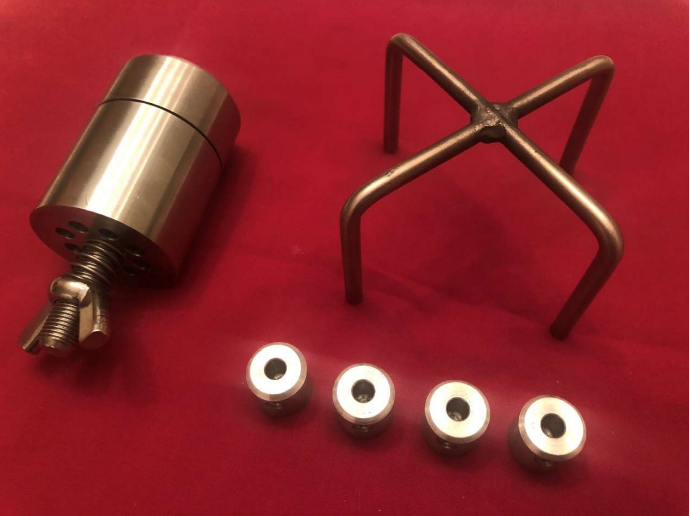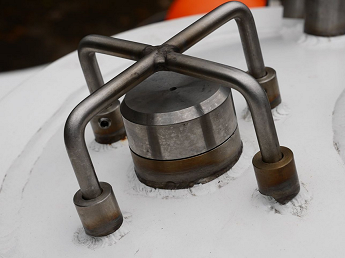

| Submarine Cabin Overpressure Valve |
 |
 |
|
Download Drawings
Download Performance Report |
|
Submarine hulls are designed to resist external pressure, and a minor build-up of internal pressure can cause catastrophic flooding by unseating a viewport or a hatch, particularly upon nearing the surface at the end of a dive. The primary purpose of an over-pressure valve is to mitigate the likelihood of this type of accident. However, it also provides secondary benefits:
Overpressure valves should be installed at or near the highest point in the hull, because that will maximize differential pressure allowing the valve to open at the earliest opportunity in the event of an internal pressure buildup. Typically, these valves are welded into the hatch or the conning tower wall. In the submersible Great Escape, the valve was installed in a small unused viewport seat without any need for welding. The valve is protected by a removable safety cage, to prevent it from being forced open by foreign objects such as fishing line. Inspection and cleaning of O-ring and sealing surfaces are essential, and must be incorporated into pre-dive checklists. This valve is used on the submersibles Snoopy, Shackleton, and Great Escape, and valves of similar design are used on countless others. The valve was designed and fabricated by Alec Smyth. Cliff Redus created the blueprints and an instrumented test rig to validate depth rating and cracking pressure. The valve was tested to the limit of the rig (over 5,000 fsw) without failure or any damage to its O-ring. The cracking pressure is adjustable via a butterfly nut, from approximately 0.5 psi differential pressure. If a lower cracking pressure is desired, install the valve in the CT wall so it is horizontal, or consider a version with a thinner (i.e. lighter) cap if it will be installed vertically. Adjust the butterfly nut for the lowest cracking pressure that eliminates weep. |